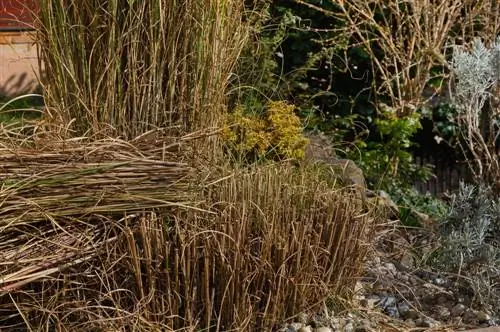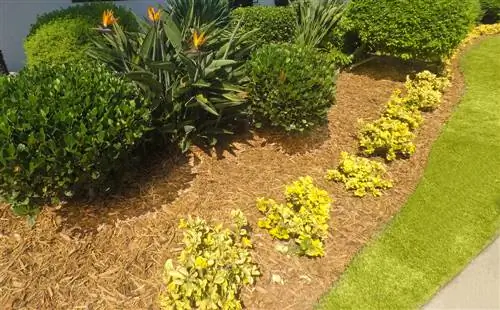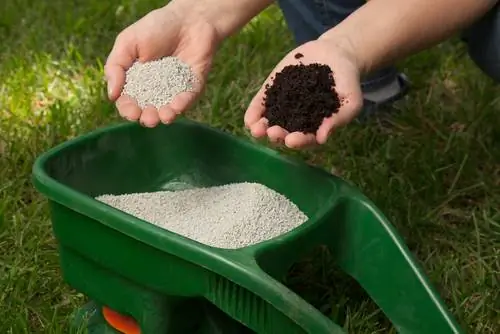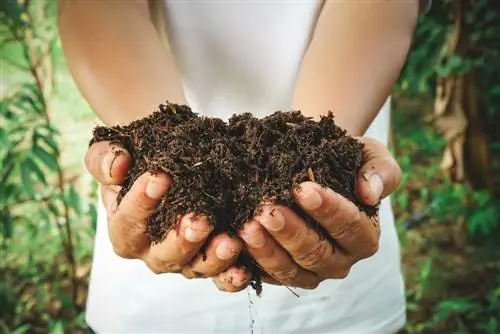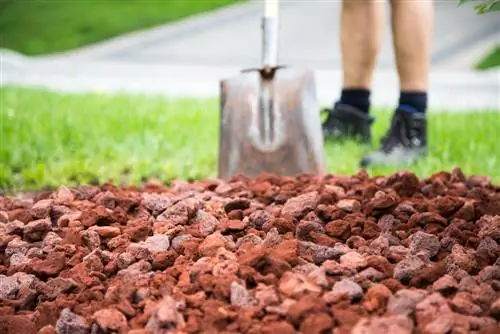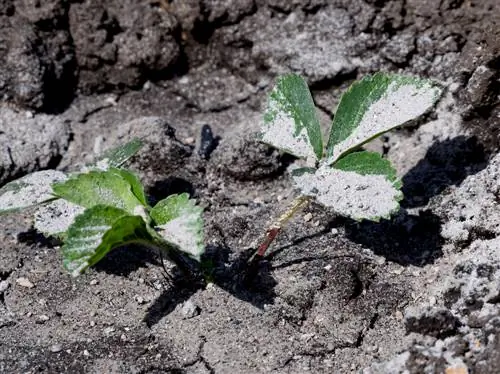- Author admin [email protected].
- Public 2023-12-16 16:46.
- Last modified 2025-01-23 11:22.
If you want to do something good for your garden plants and save yourself the work of frequent watering and weeding, use mulching material. What about the Miscanthus? Is it recommended as mulch?
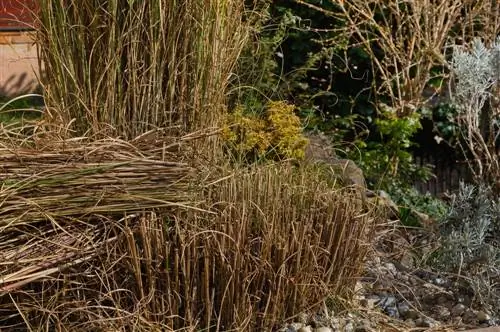
Why is miscanthus recommended as mulch?
Miscanthus is ideal as a mulching material because it is pH-neutral, inhibits weed growth, stores moisture and provides nutrients. Compared to bark mulch, it is lighter, cheaper and does not tend to mold or rot.
What advantages does miscanthus have as a mulching material?
The miscanthus, also known as elephant grass, hasnumerous advantages. On the one hand, it is pH neutral. On the other hand, it inhibits weed growth, promotes microorganisms and, thanks to its structure, retains moisture in the soil for longer. Last but not least, it even gives the soil a few nutrients. You only need to replace it every two to three years as the stalks slowly rot.
Why does miscanthus outshine bark mulch?
In contrast to bark mulch, which makes the soil acidic and also removes nitrogen, the pH value of Miscanthus isneutraland it does not remove any nutrients from the soil. In addition, miscanthus mulch islighterandcost-effective than bark mulch. In addition, miscanthus mulch does not tend to mold or rot compared to bark mulch and does not smell offensive.
When and how is miscanthus processed into mulch?
After overwintering, the miscanthus can be made into mulch. Then its stalks and leaves dried off. If you want to harvest the reeds yourself, you should cut them between March and April individual stalks into 2 to 3 cm long piecesshreddingA shredding machine is advantageous for this (€94.00 at Amazon).
Alternatively, you can also purchase the miscanthus as shredded commercially.
What should you consider when using miscanthus mulch?
Before taking the mulching material in your hands, it is advisable to put on gardening or work gloves. This protects against possible injuries caused by the stalks. These are quite sharp-edged.
If you have already removed weeds from the beds orOnce you have removed the reeds around the plants to be mulched, you can get started straight away and distribute the reeds evenly. The layer thickness when applying should be 3 to 5 cm. After spreading and, if necessary, tamping down, the mulch layer is pouredThis prevents the stalks from being blown away by the wind.
For which plants is miscanthus mulch suitable?
The miscanthus mulch is suitable forall plants in the garden. For example, you can use it to mulch a vegetable bed and therefore need to water it less in the summer. Herbs, roses, perennials, trees and berry bushes can also be mulched with miscanthus. It even protects against snails. These pests avoid crawling over the miscanthus because its sharp edges make it appear dangerous.
Tip
Add new miscanthus if necessary
If necessary, you should always mulch new miscanthus. It is simply spread over the old miscanthus mulch. The old layer does not need to be removed.

